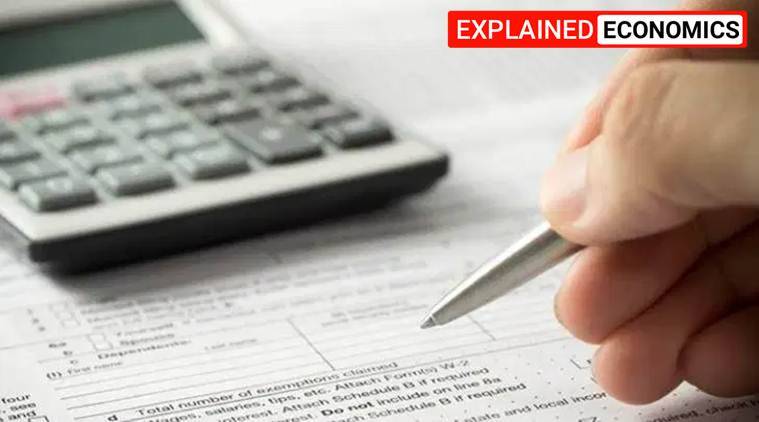In case you’re among the laborers who intend to keep working distantly, you might need to assess your 2021 expense circumstance.
While numerous states offered a pandemic-related respite that by and large brought about no expense recording commitment for telecommuters who worked briefly in their express, the mercy was for 2020 returns. Furthermore, as the country rises out of the pandemic, that consistence split will be disappearing.
“As emergency orders are lifted, the guidance is changing,” said Eileen Sherr, director for tax policy and advocacy with the American Institute of CPAs. “Some states are lifting them now.”
Numerous laborers started managing their responsibilities distantly over a year prior when organizations sent their representatives home as once huge mob because of the pandemic. In June 2020, an expected 42% of the workforce was working from home, as per research from Stanford Institute for Economic Policy Research.
Of the individuals who were all the while taking care of their responsibilities distantly in late 2020, about 30% said they were working in an unexpected state in comparison to where they had lived and worked pre-pandemic, as indicated by an overview done by the Harris Poll for the American Institute of CPAs. The vast majority studied (72%) were by the same token “very” or “not in the slightest degree” acquainted with their state’s duty necessities for far off work.
It tends to be confounded. Various states have various methodologies for when they anticipate that you should report pay procured there, and the standards don’t really mean you’ll be paying more by and large in charges on the grounds that most states give a tax break to wipe out twofold tax collection (albeit that isn’t generally the situation).
“The No. 1 concept for an individual who is a remote worker to know is that whatever state you are a resident of gets to tax your wages, regardless of where you earned them,” said CPA Michael Bannasch, state and local tax practice leader with RKL, an accounting and advisory firm.
Notwithstanding, he said, you may have an expense risk in another state in the event that you bring in cash or work there or then again in case it’s the place where your organization is found, contingent upon the states in question.
For instance, a few states let out-of-state people work there for over 30 days without a retention prerequisite, including Arizona and Hawaii, which let you be there for as long as 60 days.
Other states’ limits kick in quicker, including 23 that need you to make good on the very beginning. Furthermore, then again different states have a pay based limit for tax assessment, while nine states have no annual duty by any means.
A few states have complementary concurrences with each other. Essentially, if your inhabitant state has this agreement with the one where you work, you will not need to pay in the two purviews. For example, in the event that you live in Maryland yet work in the District of Columbia, you just need to stress over having charges retained for Maryland.
In the mean time, there likewise are a modest bunch of states — Connecticut, Delaware, Nebraska, New York and Pennsylvania — that force a “comfort of manager” test for telecommuters. In the event that your organization is situated in one of those states, you for the most part will pay charges there except if your distant area is because of your manager requiring you to move.
“In those states, if your reason for working [remotely] is not because your company required it, you’d have to pay taxes to the state where the employer is located,” Sherr said.
For telecommuters, these contrasting guidelines mean know the state laws that will influence you. Getting your check retaining right is for the most part a common obligation among you and your organization, Bannasch said.
“Because an employer can get penalized by a state for not withholding when they should have, the employer has an incentive to put policies in place to know where their employees are working,” Bannasch said. “But, of course, those policies are only as good as the employees’ level of compliance.”
Likewise, in case you are a self employed entity for your organization — you don’t get a W-2, yet rather, say, a Form 1099 — you are viewed as independently employed and burdened accordingly.
This implies you are liable for sorting out which states you owe assessments to, in light of where you dwell and where you were the point at which you brought in the cash. In any case, Bannasch said, the computation did not depend explicitly on the time spent in various states, but instead a blend of the sum procured in those states just as some different variables (i.e., regardless of whether you have representatives working for you and your business income).
Quite possibly’s the tax collection from telecommuters could change sooner or later, given the development of the country’s portable labor force. A bipartisan bill in the Senate, the Remote and Mobile Worker Relief Act of 2021, would not allow states to burden or require retaining on non-inhabitant representatives who are in a state for under 30 days (during the current year, it would be 90 days). A comparative measure is forthcoming in the House.
Another Senate bill (with a connected one in the House) would restrict the capacity of states to force the “convenience of employer” rule on out-of-state people. Also, a few states are changing their guidelines — i.e., how long an individual can work in there without being burdened — to be more obliging to telecommuters.
Disclaimer: The views, suggestions, and opinions expressed here are the sole responsibility of the experts. No Economy People journalist was involved in the writing and production of this article.




